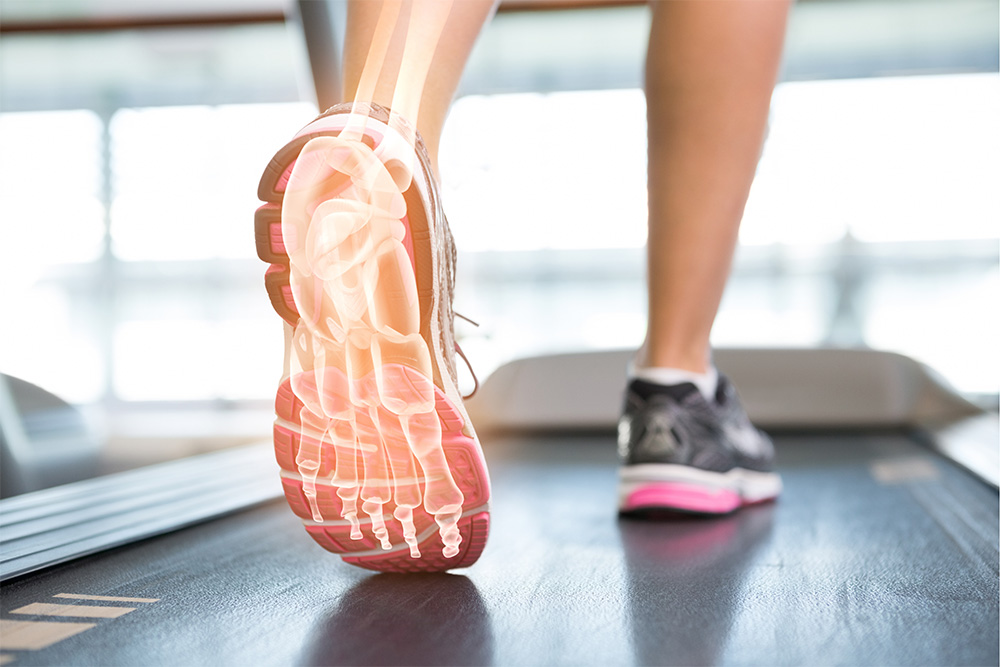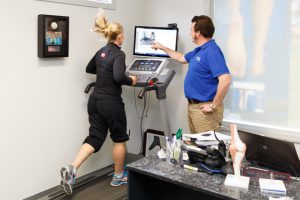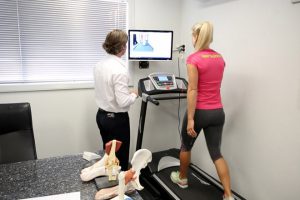

Video gait analysis is an advanced form of movement analysis that assists us in diagnosing complex motion-related pathologies of the foot, ankle, knee hip and lower back.
There are three basic stages to the human gait cycle, and it is impossible to examine and review the detail of this intricate motion with the naked eye. With computerised video gait analysis, we are able to break each second of the gait cycle into tiny segments (frames), allowing our podiatrists to conduct a detailed assessment of the foot position, foot and leg function, and overall posture.
The world-class, integrated software we use here at My FootDr allows us to further manipulate the images obtained to calculate kinematic angulations (motion of body planes) of the leg, ankle and foot. We’ll explain to you exactly what we’re seeing on video and how that may be contributing to any pains or problems you’re experiencing, and then print them for you to take home.
In addition, all video and still-frame images are saved to our advanced multimedia server for reference and review in the future, allowing instantaneous comparison with different shoes, changes over time, or differences post-operation, as helping you with rehabilitation following injury or surgery is a big part of what we do here at My FootDr.

Video gait analysis is particularly useful in helping to diagnose conditions associated with running or sport, as well as painful foot and leg conditions that are termed ‘overuse’ in nature. This assessment is routinely performed by our specially trained podiatrists during biomechanical assessments.
Video Gait Analysis FAQ’s
What happens during a video gait analysis?
We get you walking on our treadmill integrated with our analysis software and including cameras. As your gait is recorded, we look back to see what is happening during each phase of gait and identify what may be contributing to your pain or problem. We talk through exactly what we’re seeing, and what it means for your feet and legs. If your pain is starting or occurring primarily during running, then we also include a running analysis.
How does a video gait analysis help me?
By understanding what is happening during gait, we gain an insight into the reason for your foot pain, discomfort or other problem. When we know the cause, or a contributing factor, then we can create a tailored treatment plan that will help solve the problem now, and help prevent it from recurring in the future.
For example, if you have pain at the big toe joint, our video analysis may reveal that a tight Achilles tendon is causing you to lift your heel off the ground earlier than we expect, meaning that more pressure is placed on the forefoot and the big toe joint for longer with every step. In this case, ensuring we implement a rehab program that stretches the Achilles will help prevent this problem from happening again in the future.
Can I book straight in for a video gait analysis?
Video gait analysis is always performed as part of the investigation process during a biomechanical assessment, to uncover the likely causes for the pain or problem you are experiencing. It is an important part of a larger picture, which also includes testing your muscle strength, flexibility, foot posture, understanding your injury history, medical history and more.
When will I know the results from my analysis?
Instantly. Right after we have recorded your gait, your My FootDr podiatrist will review your gait in your presence, show you what they are seeing, and discuss what this means and how it may be contributing to your problem.
Who performs a video gait analysis?
Only registered podiatrists perform video gait analyses here at My FootDr.
What happens to the video recordings?
Your video recording is kept securely in your file, so it can be used in the future for comparison or to track your progress. Your podiatrist is able to review this video if they are prescribing your orthotics, updating your rehab program, or developing your care plan.


